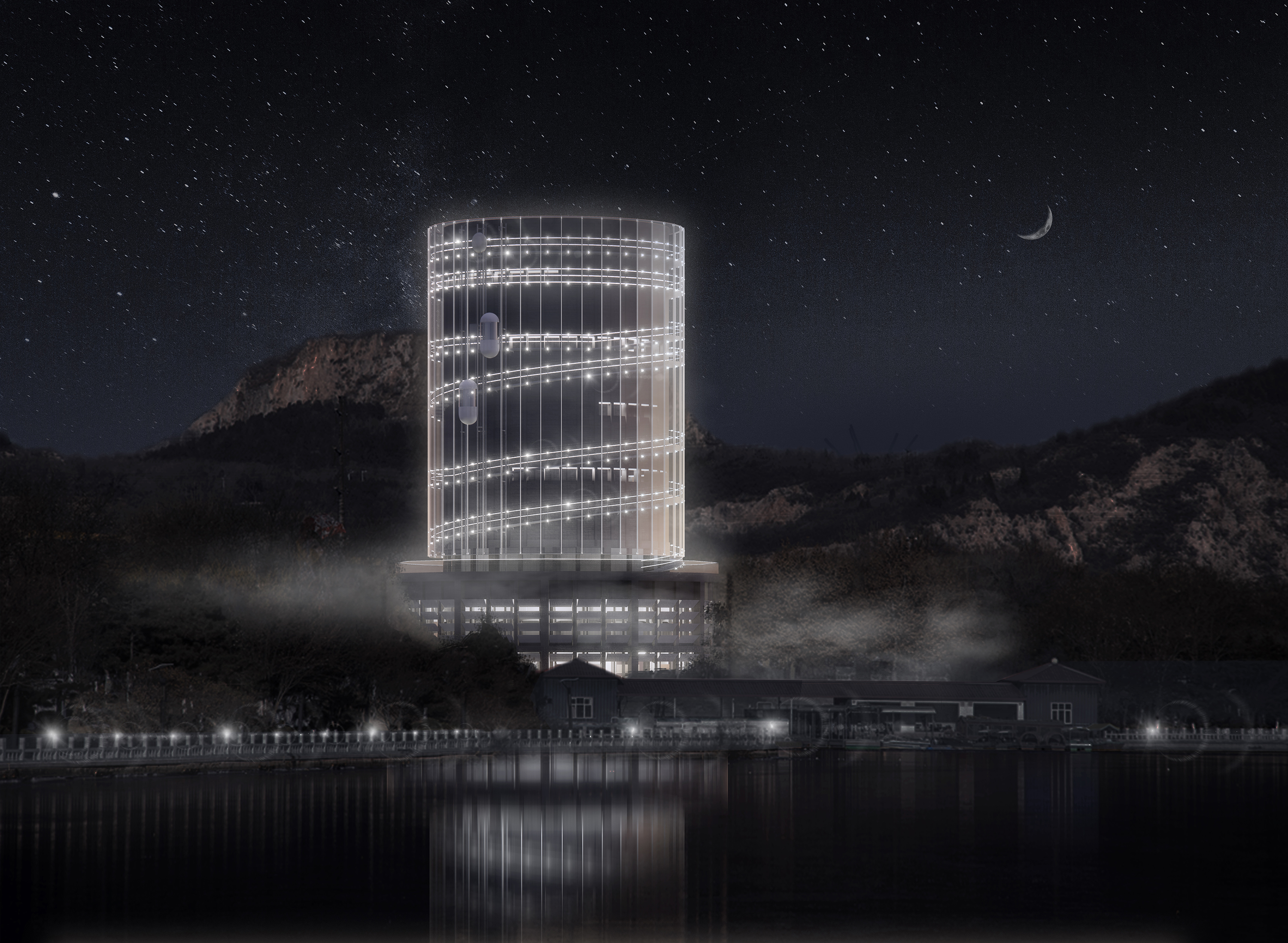
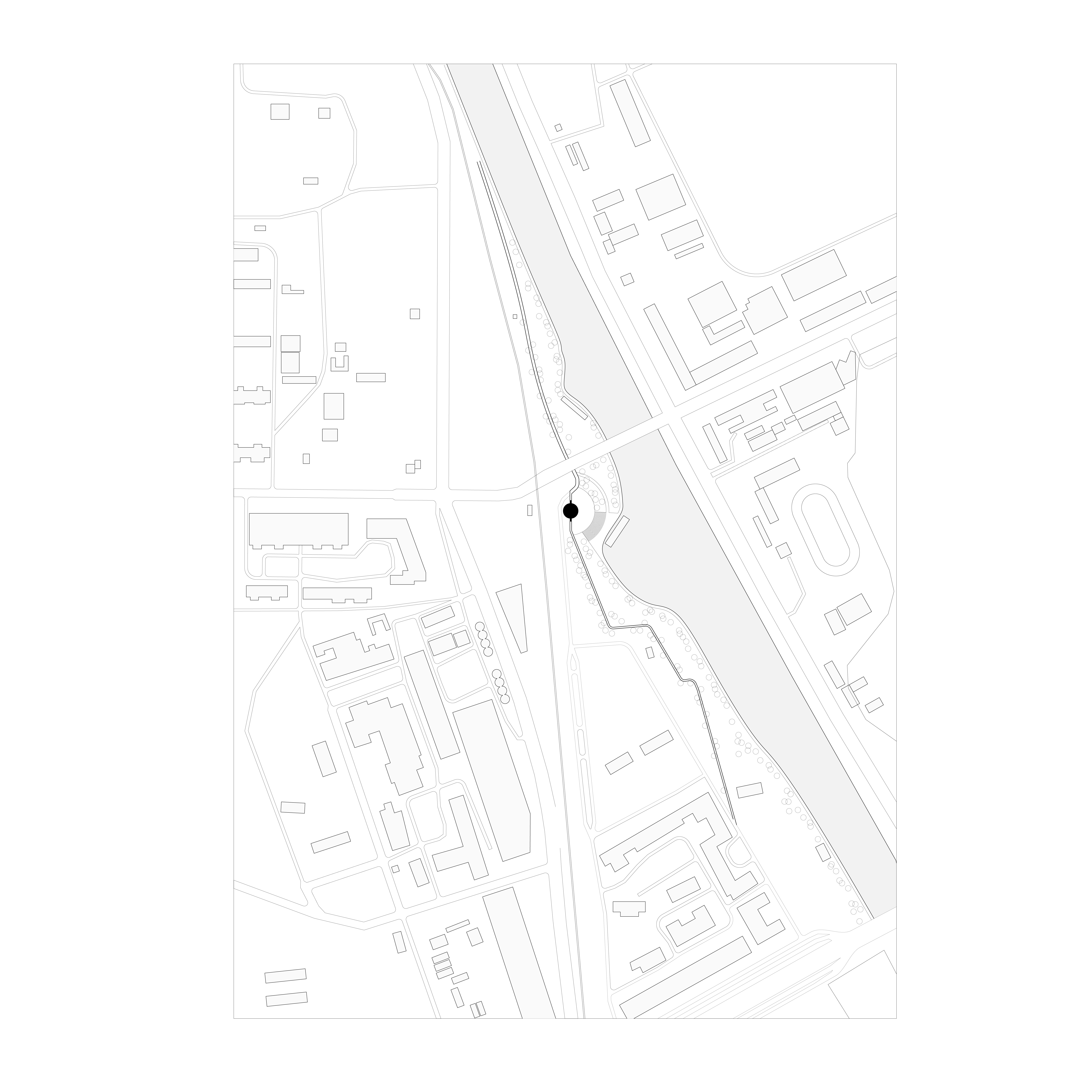
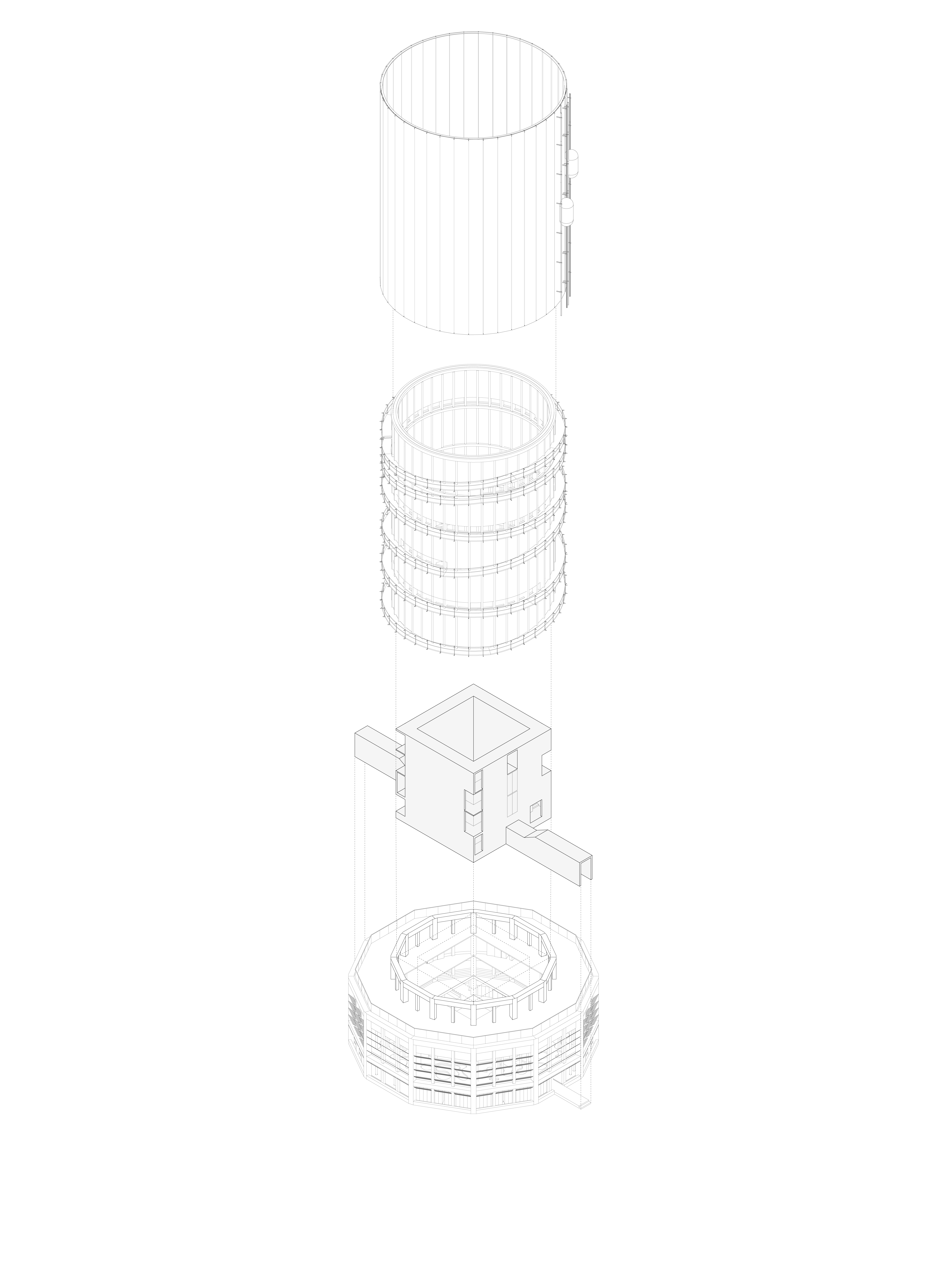
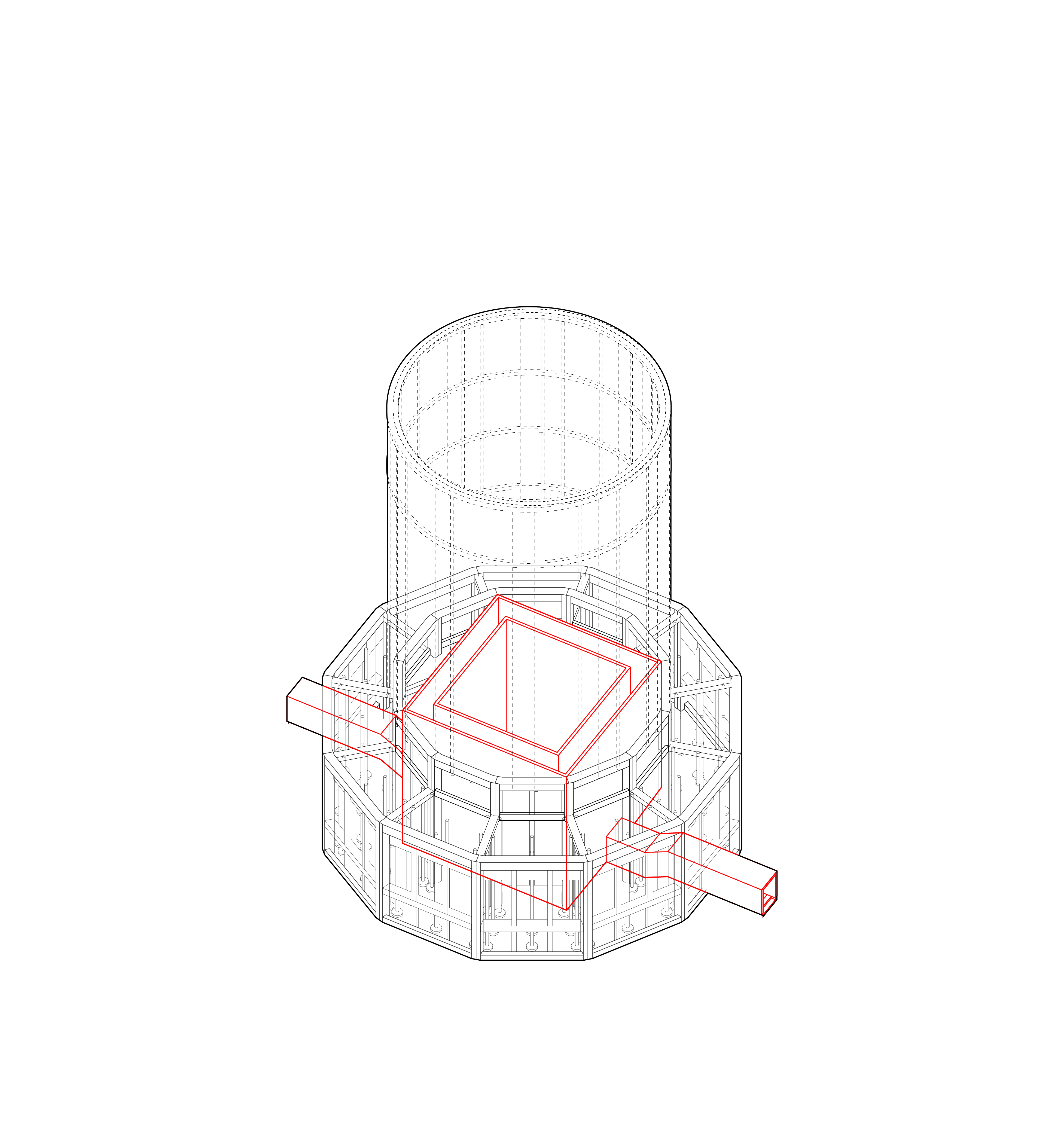
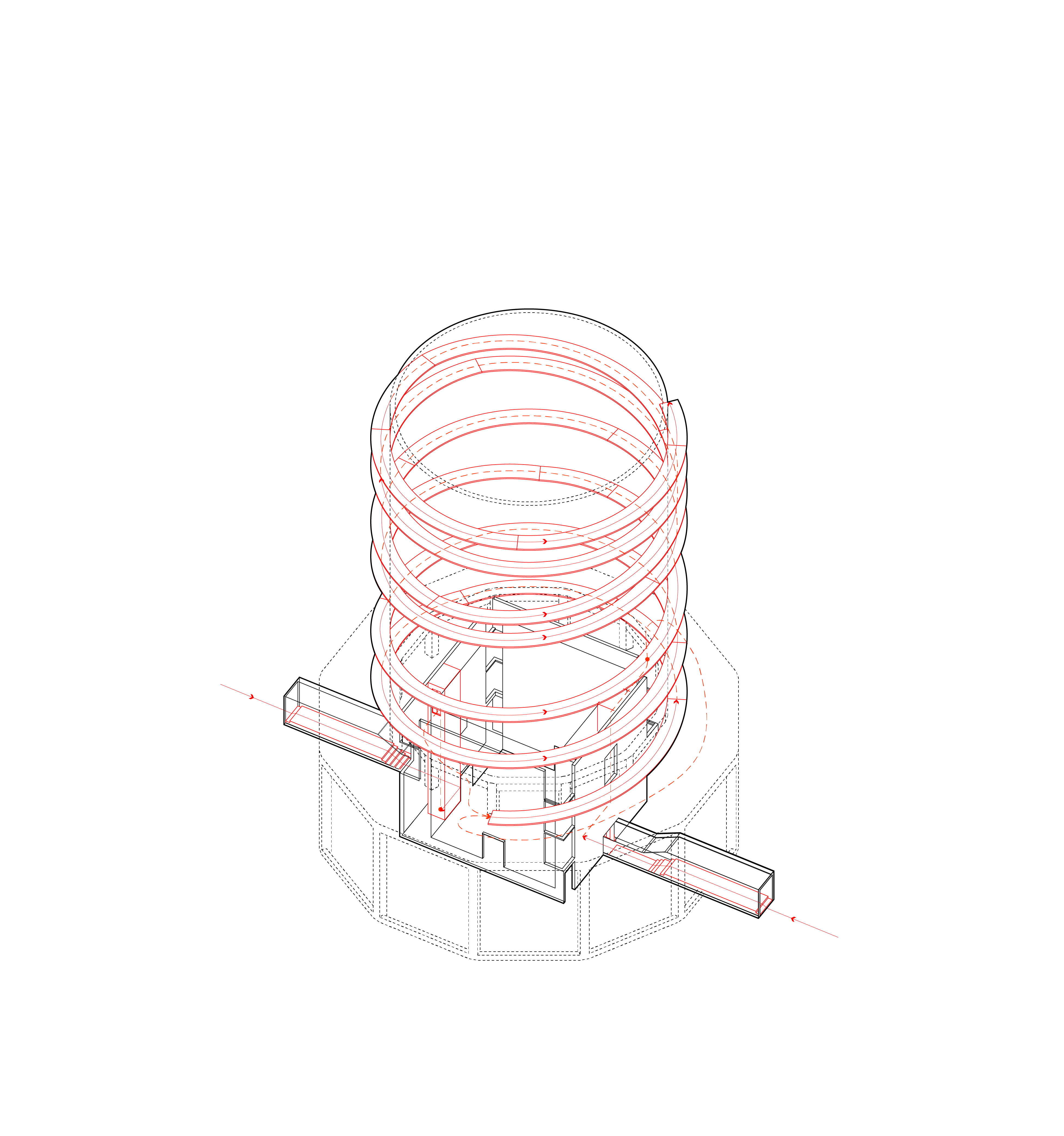

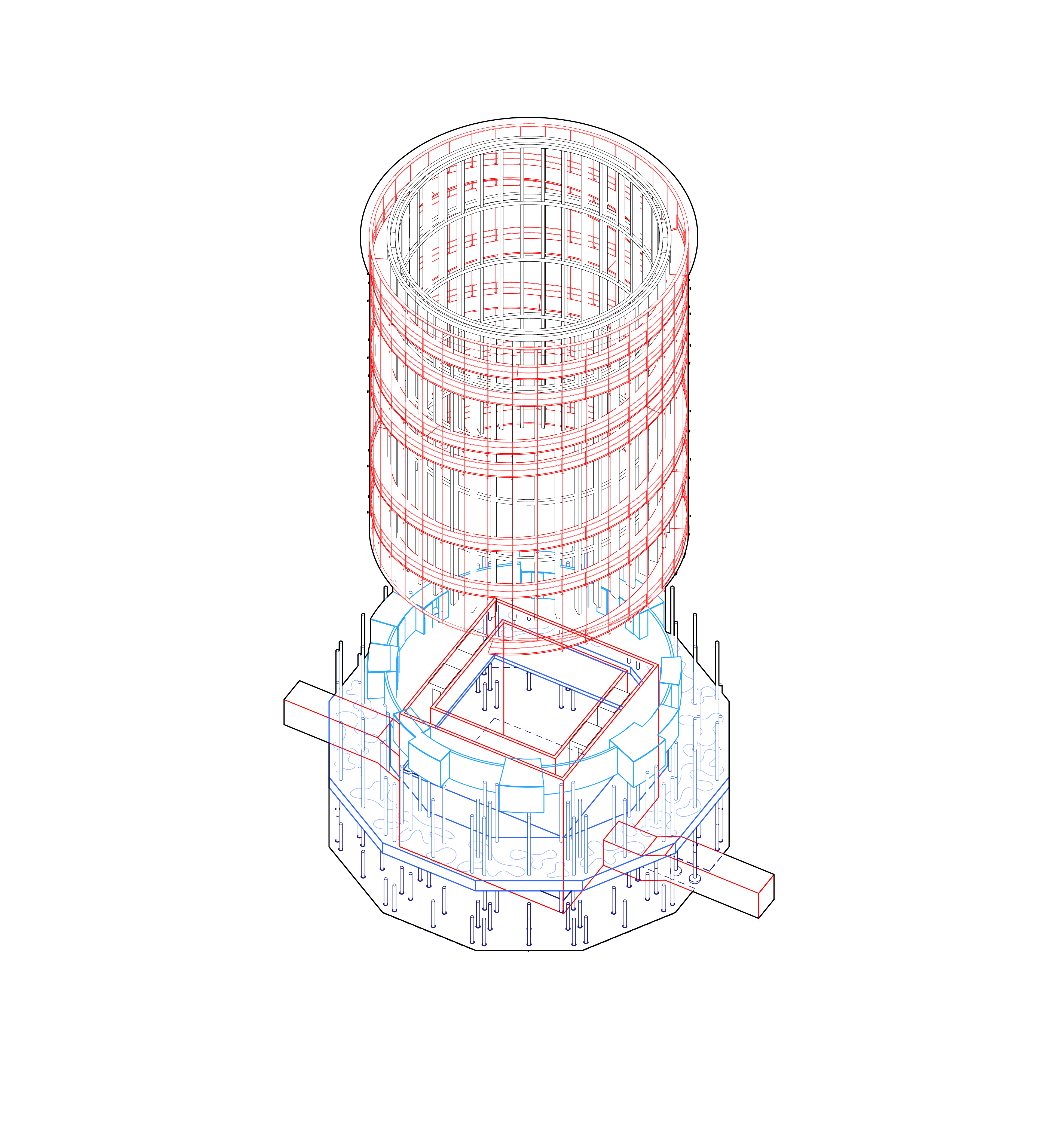
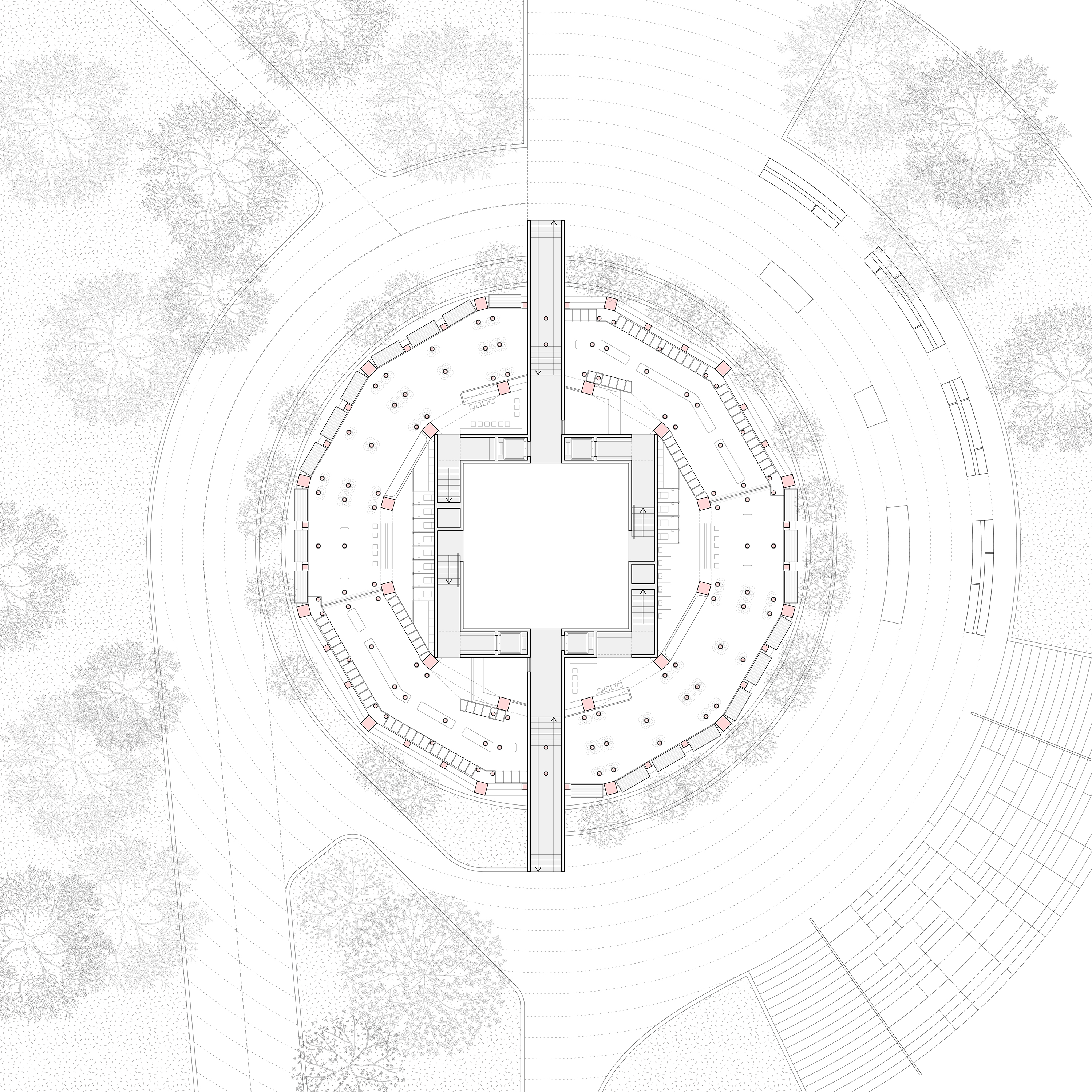

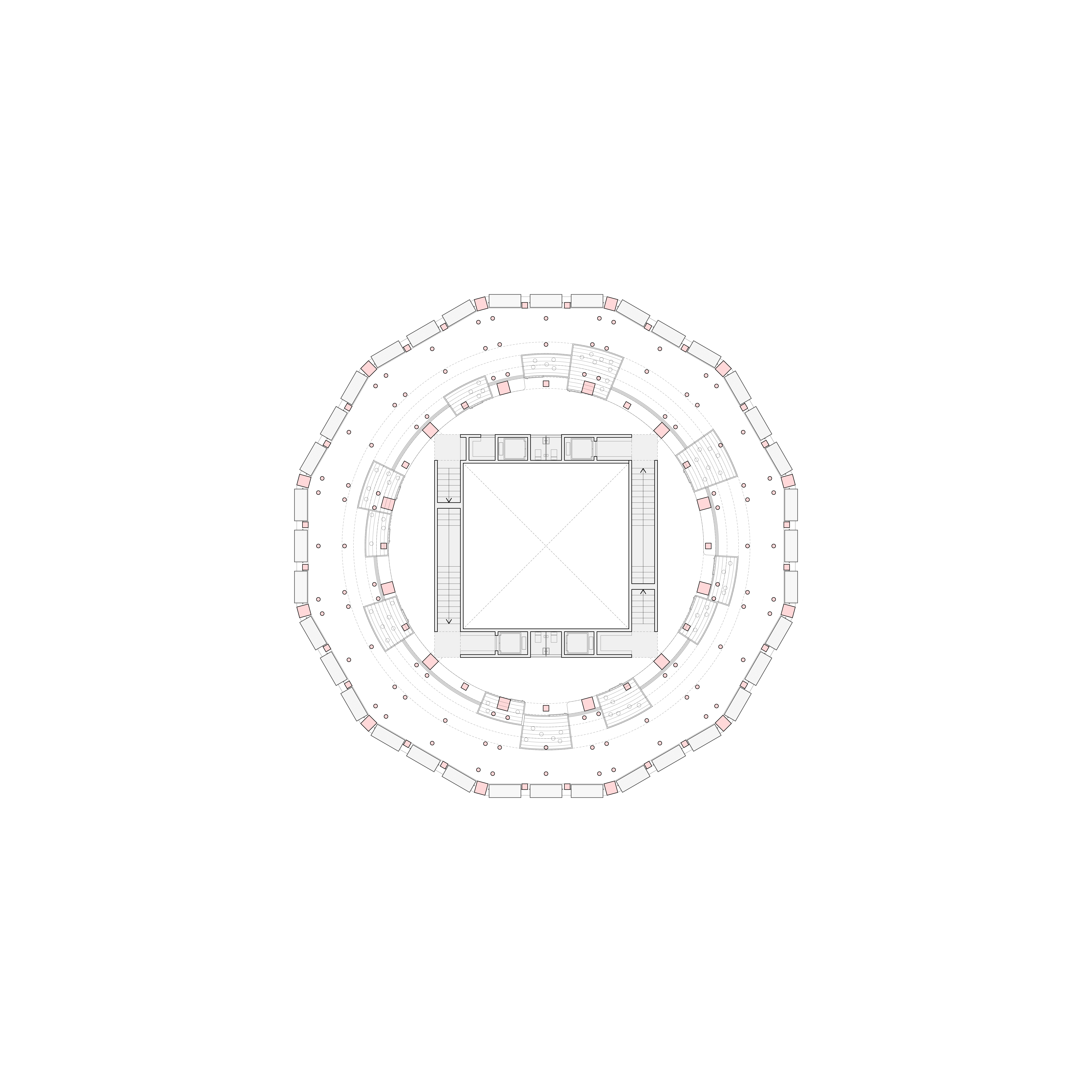
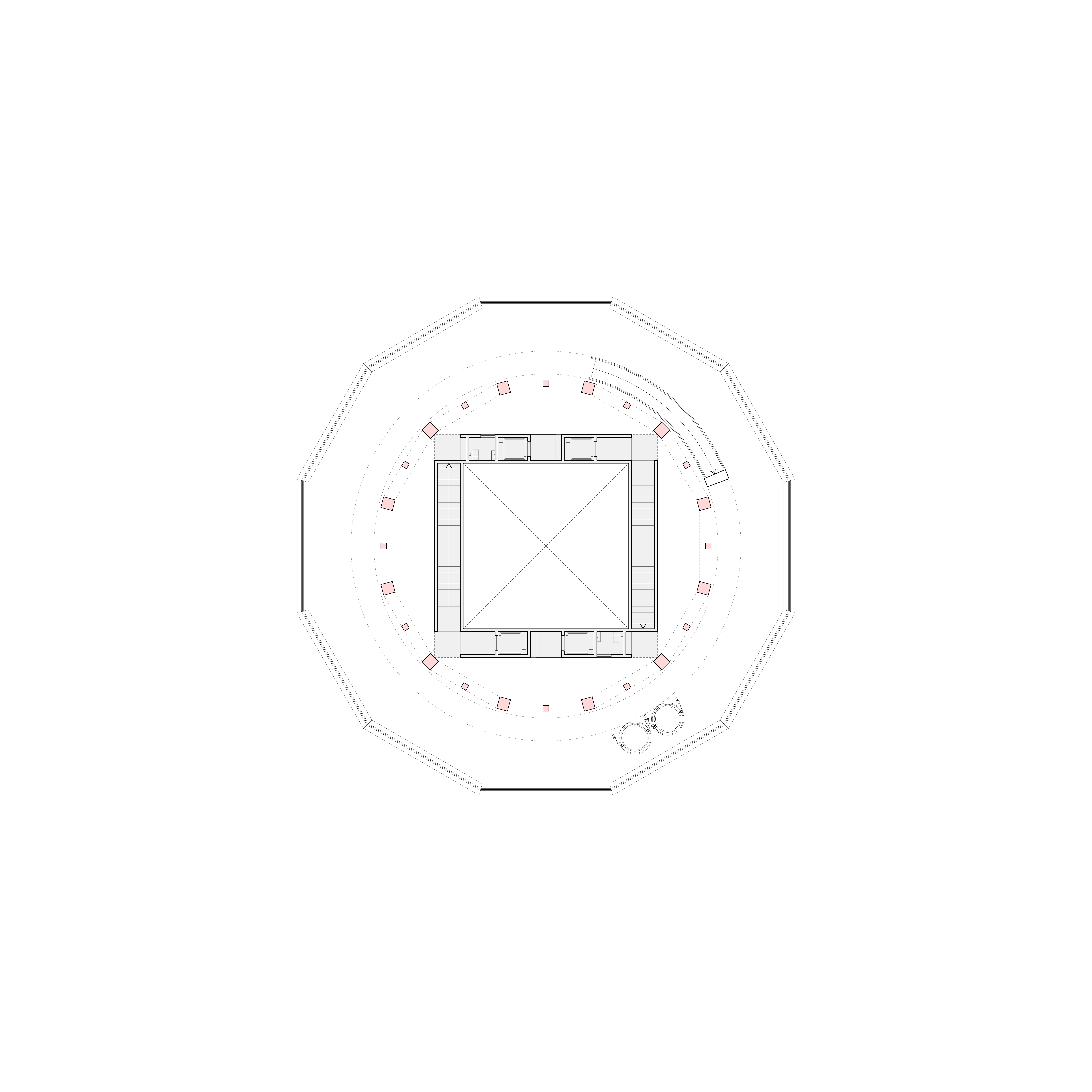

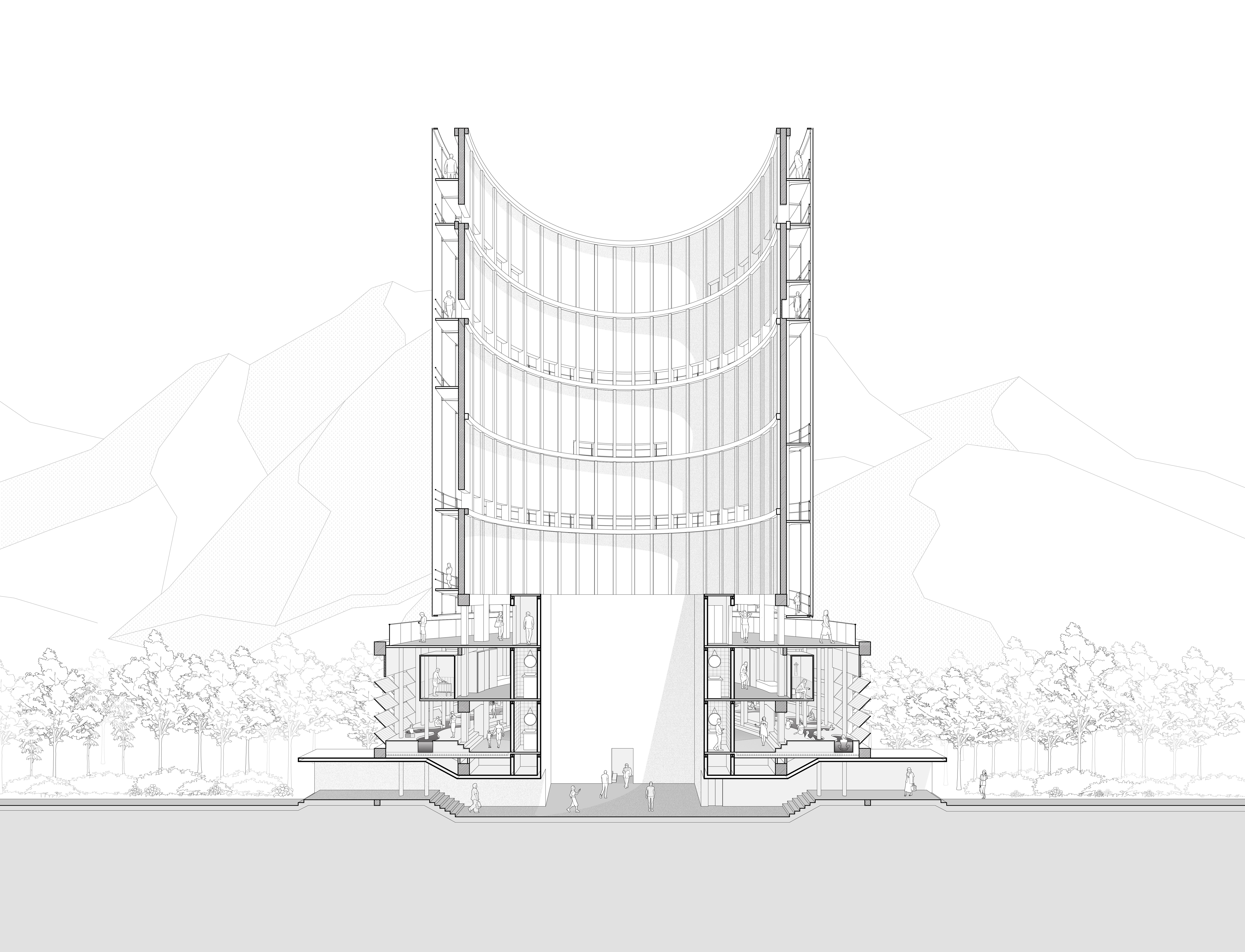
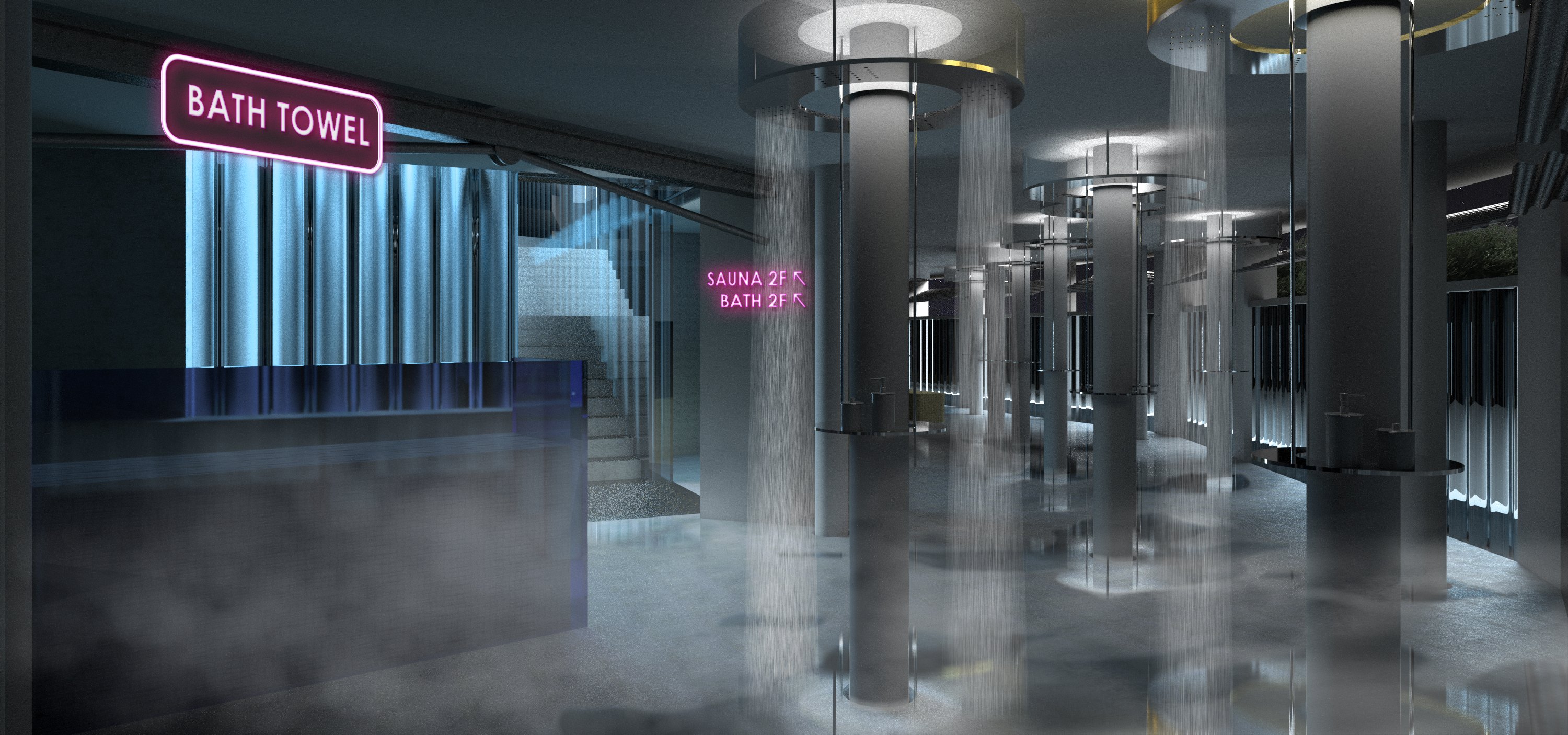
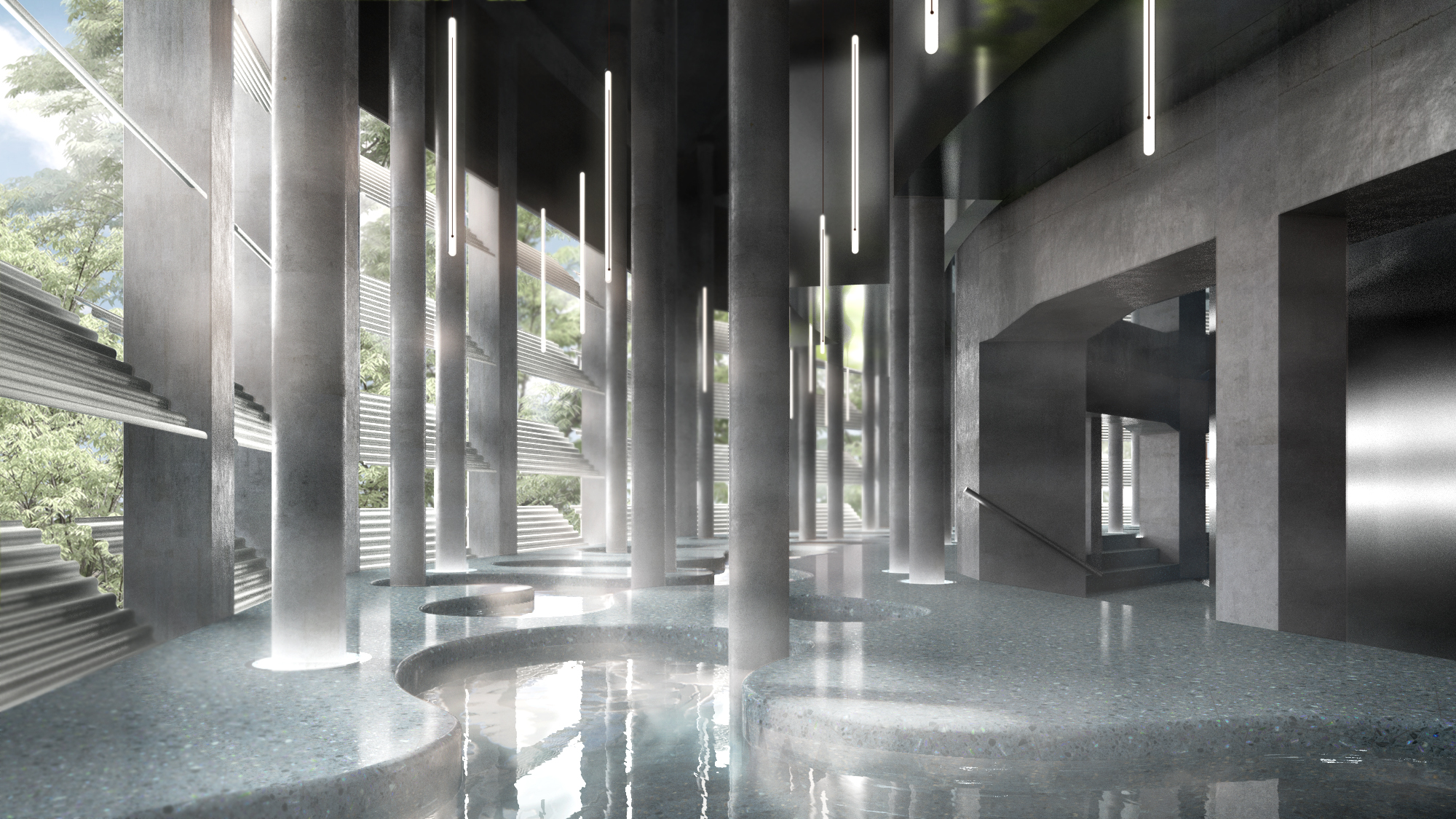
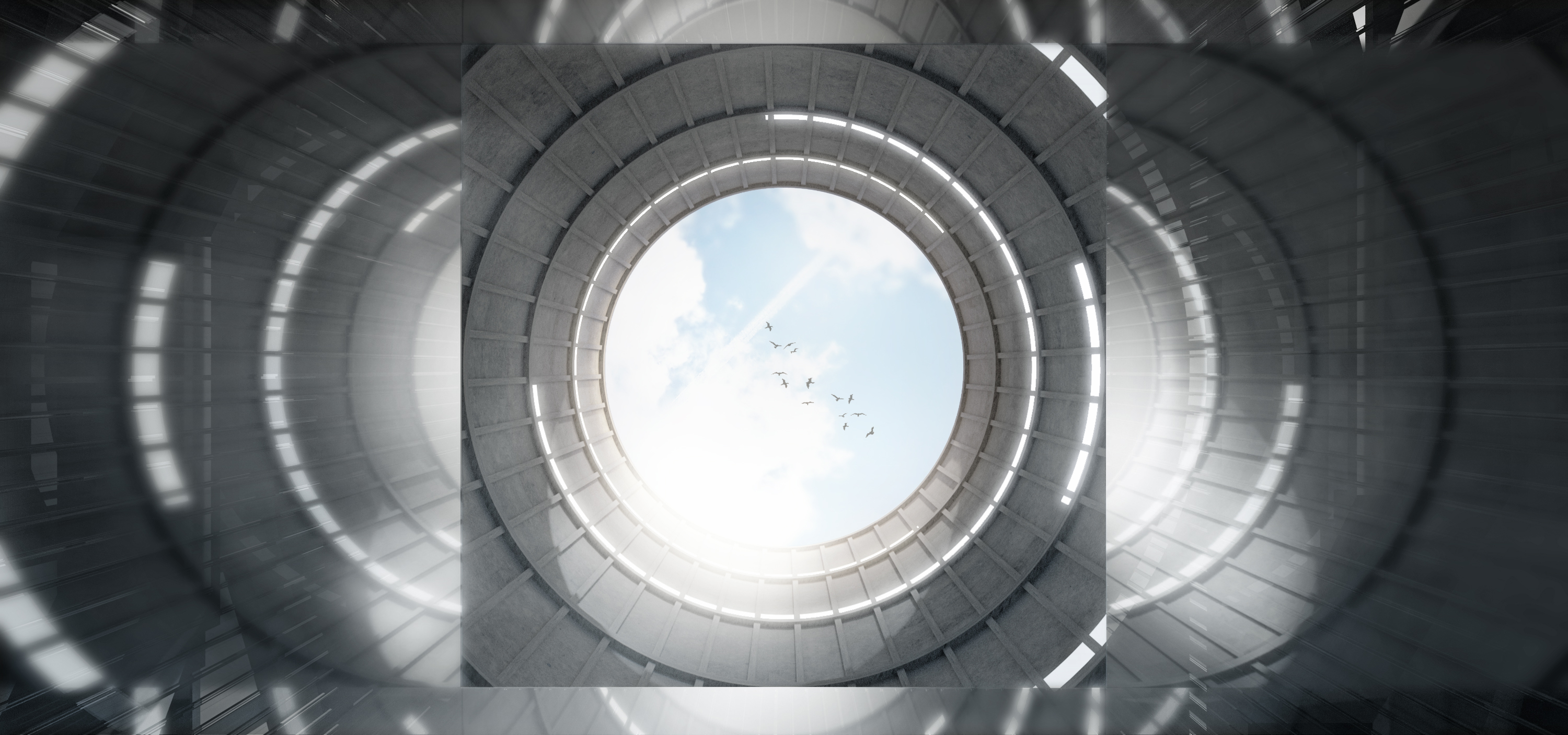



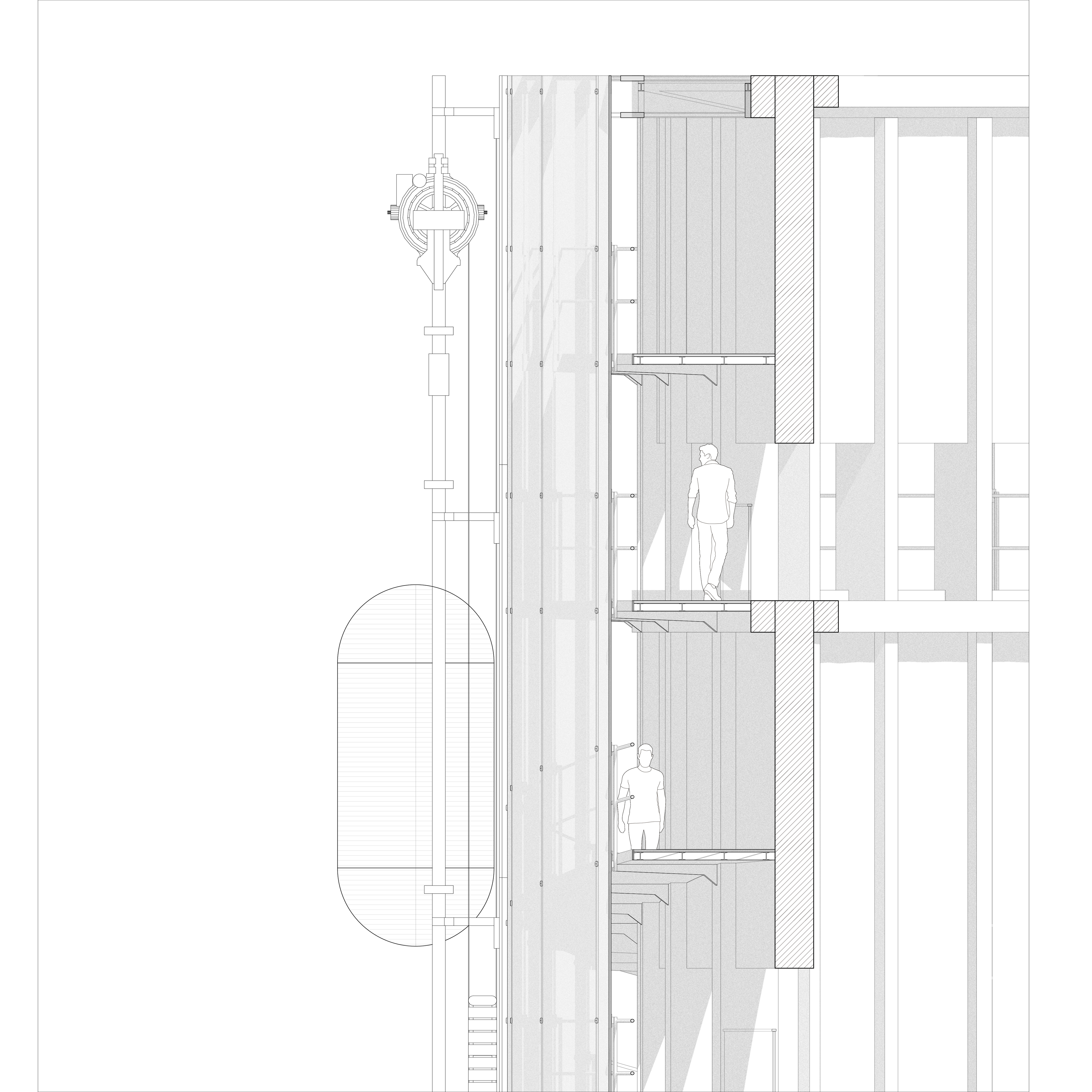

Memory of Vapor
Site: Tangshan, China
Date of Project: May. 2021
Team Work with Ziyang Xu, Zhiyu Li, Lanchun Zeng
As an important industrial heritage in Tangshan city, the cooling tower is not only an iconic image of the industrial city in the context of times but also the collective memory of Tangshan people. Meanwhile, as an important threshold of the landscape trail along the river, the cooling tower has the attributes of urban public space. Its verticality renders it the function of city sightseeing. Therefore, we hope to reframe the cooling tower in three aspects: the horizontal urban scale, the vertical landscape scale, and the repositioning of architectural programs.
The Horizontal Urban Scale
The cooling tower is located in a narrow plot between Dou River and the railway line, which is an essential node of the landscape axis. Starting from the urban scale, we conceive of a continuous spatial experience along the landscape axis, connecting the interior of the cooling tower to the route of the visitors. We regard the interior of the cooling tower as a public property of the city, and it should be open to the public. By inserting an empty box into the original structure, we formulate an out-in-out sandwich spatial prototype that breaks the discontinuity of public space in the section. While centered void becomes the new core of the tower internally, it also enriches the form and content of the public circulation externally.
From a functional perspective, the program-wise undefined empty box does not bear concrete functions. However, as the interface between the public and private circulation in this building, the empty box is a place for encounter and interaction. The void bears the important responsibilities of navigating the crowd and accentuating the landscape, making it the living room of the city. The internal scenery of the tower also breaks through the physical border, transforming from an architectural spectacle into a part of the urban scenery.
The Vertical Landscape Scale
The cooling tower was once the tallest structure in its surroundings. Just as Louis Kahn once said that bricks want to be turned into arches, the verticality of the cooling tower calls for post-industrial vertical space utilization, which allows the structure to have more possibilities to interact with people and the city after the erasure of its original functions. The circular enclosure of the tower generates a duality of inside and outside. Inside the tower, we defined the boundary of architectural programs by placing an empty box in the center, retaining the hollow volume from the ground to the tower top, so that the interior vertical scenery has the maximum depth, and the public circulation is vertically extended; outside the tower, we introduced a new translucent skin to give the industrial heritage a new identity, and by inserting a spirally rising landscape trail between the two skins, we made full use of the volume characteristics and provided the cooling tower a new function as an observatory.
The Repositioning of Architectural Programs
Tangshan was once one of the most important industrial cities in China. The lifestyle and urban scene in the age of industrial production are deeply imprinted in the memory of the Tangshan people. The cooling tower was completed in 1906 with the establishment of Qixin Cement Company, having witnessed the development of the city and the life of several generations. According to the narration of local residents, when the cooling tower was working, the internal spray system would spray water mist to cool down. Therefore, the memory regarding this tower is multi-sensory: the visual translucency in the air and the dampness from the white mist and water vapor on the skin. We hope to reproduce this 'wet memory' on site.
We think of a bathhouse. The mist in the bathhouse can recreate this unique memory of skin. In both Eastern and Western civilizations, bathing has been a collective activity. Though bathhouses in different places embody a diversity of forms, what is inevitably true is its ability to gather isolated people. The bodily nakedness in bathhouses leads to spiritual intimacy.
In addition to echoing the historical image of the cooling tower on the architectural scale, the bathhouse is also closely connected with the industrial context of Tangshan on the larger urban scale. Before the individual water supply system was widely applied in cities, the bathing space was planned as the urban infrastructure services. In planned-economy Tangshan, where Danwei functioned as the basic unit of social structure, bathhouses were constructed as service facilities in a Danwei and were usually exclusive to workers and their families. The close community relationship in Danwei strengthened the social attribute of bathing and made bathhouses documentation of time and regional characteristics. People washed away the tiredness of the day while gaining spiritual pleasure and satisfaction in the talk and laughter. The process of recognizing faces in the misty bathroom completed the sublimation of interpersonal relationships.
Today, the social relationship based on Danwei has vanished with the decay of the planned economy. A building that inherits the image features of the tower and reproduces the lifestyle of the last century will reconnect people's vision with the pure and high-spirited era of the past. This reflective nostalgia will render city images from the industrial age new vitality in the contemporary background and weave the memory of a generation back to the city narrative, continuing the past in future decades.